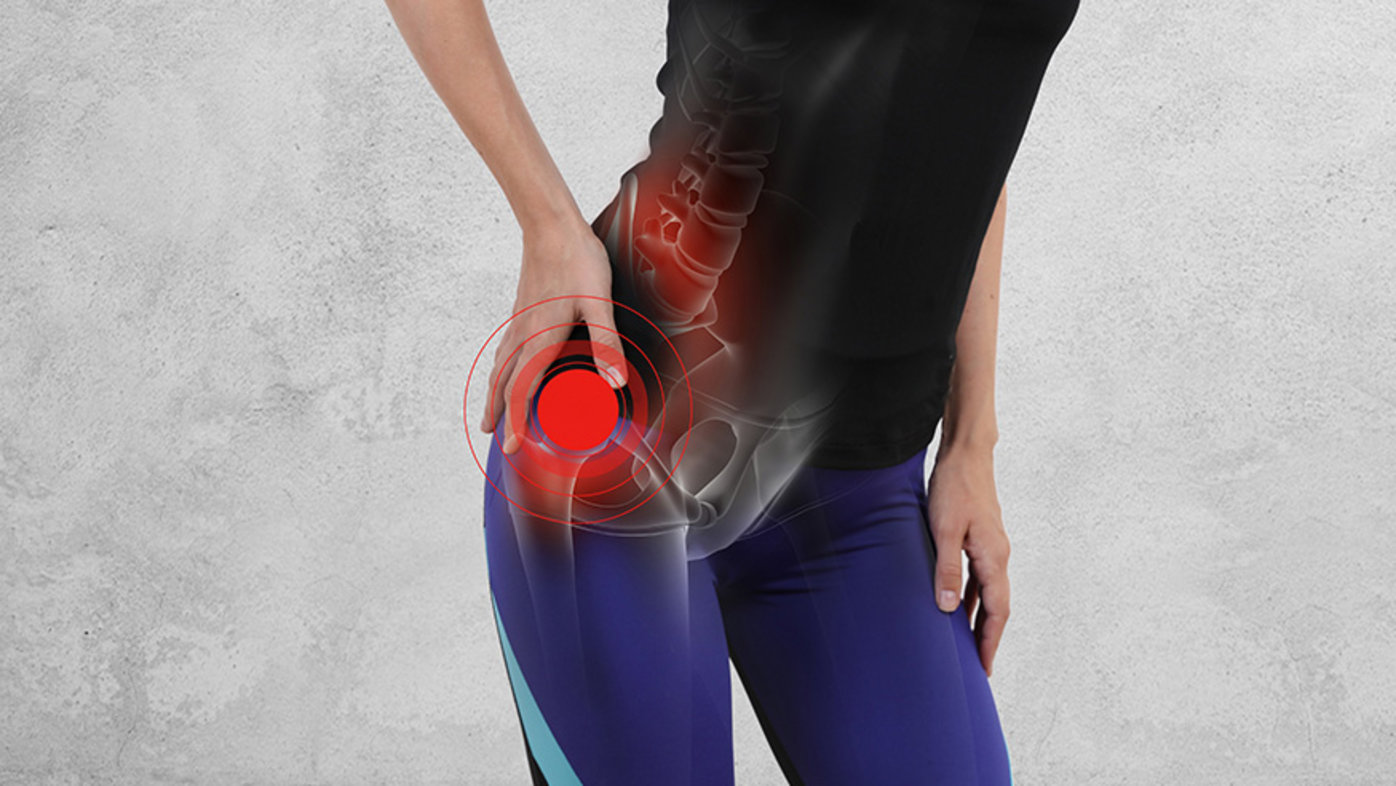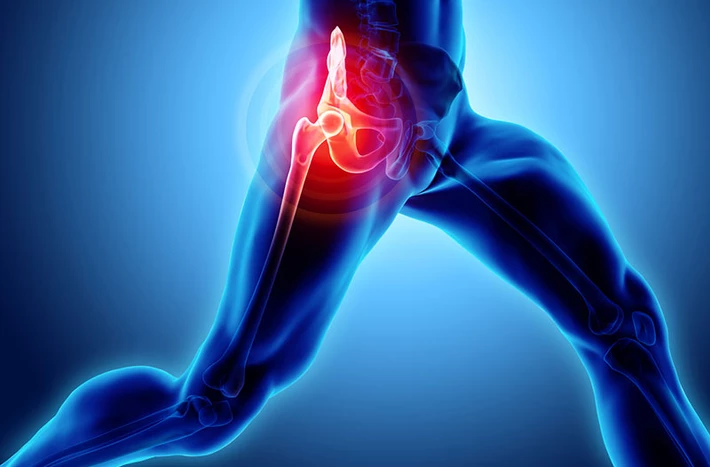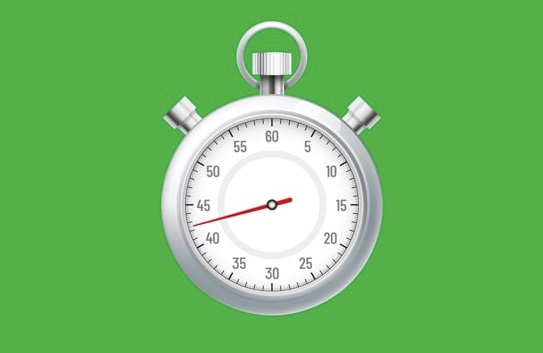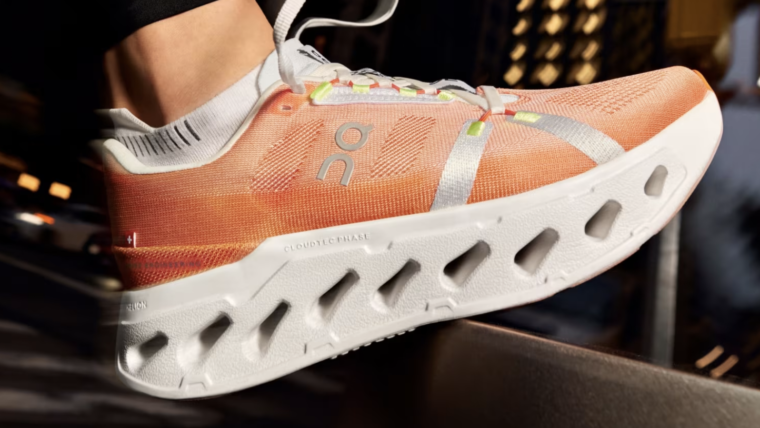Hip pain after running is a widespread issue among athletes. Your gluteus medius takes up to 3 times your body weight with each stride. This pain can throw off your training schedule and hurt your performance, leaving you searching for answers.
Your hips might hurt for several reasons. Muscle strains and tendonitis can affect your hip flexors, adductors, and hamstrings. On top of that, it gets worse if you overtrain without enough rest. Research shows runners who skip rest days face a much higher risk of injury. Those who take less than two rest days each week are 2.5 times more likely to get hurt. The good news? Proper strength training cuts your injury risk by half while making you faster and more efficient.
You need to know why it happens to treat and prevent hip pain. The pain might show up on your outer hip, in your hip flexors, or just on one side. This piece looks at what’s causing your hip pain, how to fix it, and the best ways to keep running without hurting.

Table of Contents
What causes hip pain after running?
Each stride puts massive stress on your hip joint when you run. Research shows runners experience forces up to 3 times their body weight. Learning about the mechanisms of hip pain after running helps with treatment and prevention.
Muscle strain and overuse
Several major muscle groups in your hip region can get strained from repetitive running motions. Hip flexors move your leg forward during running and often get overworked – especially when you run uphill or sprint. Your gluteus medius sits under the larger gluteus maximus and plays a vital role in absorbing shock when your foot hits the ground. Pain typically shows up on the outside or back of your hip when this muscle gets strained.
Muscle imbalances around your hip joint can lead to altered running patterns. Some muscles end up compensating for others that are weak. This creates a cycle of overuse and pain. These problems often start when runners suddenly increase their training volume or intensity, and skip their warm-ups and cool-downs.
Tendinopathy and bursitis
Runners often develop tendinopathy – inflammation and damage to tendons – in their gluteal, hip flexor, and hamstring areas. This usually happens after running longer distances than usual or not taking enough rest between training sessions. Gluteal tendinopathy can cause moderate to severe hip pain that often runs down the outside of your leg to the knee.
Bursitis is another common source of hip pain. It happens when fluid-filled sacs (bursae) that cushion your hip joint get inflamed from constant pressure. Trochanteric bursitis hits the outside of your hip and affects women four times more than men. Weak hip abductors that can’t keep the pelvis steady during running often cause this condition. The pain gets worse at night, particularly when you lie on the affected side.
Labral tears and impingement
The hip labrum is cartilage that lines your hip joint’s socket to provide stability and cushioning. Running’s repetitive motions can tear this labrum. You’ll feel sharp pain deep in your hip joint, often with clicking, locking, or catching sensations.
Femoroacetabular impingement (FAI) happens when your hip’s ball and socket don’t fit together well and grind against each other as you move. Young, athletic people get this condition more often. Men typically get excess bone on the joint’s ball, while women get it on the socket. Athletes who play high-impact sports like football and hockey face higher risks of these deformities.
Stress fractures and bone overload
Stress fractures make up about 15% of runner injuries, with 4% happening around the pelvis. These fractures develop because bones can’t repair fast enough to handle running’s repeated forces.
Femoral neck stress fractures need immediate medical attention. They can lead to serious problems like avascular necrosis if displaced. Your risk goes up with quick training increases, running on uneven surfaces, and poor nutrition. Runners get about 3.9 stress fractures per 1000 training hours each year.
Referred pain from the lower back
Sometimes hip pain after running starts in your lower back. Your spine and hip connect deeply, and problems in one area often cause pain in the other. To name just one example, tight hip flexors can tilt your pelvis forward. This puts more pressure on your lumbar spine and causes lower back pain that spreads to your hip.
On top of that, your piriformis muscle – which rotates your leg outward – can get tight and irritated. This might squeeze the sciatic nerve and cause deep buttock pain that feels like hip joint pain. So doctors need to check both your hip and lower back to find what’s really causing your discomfort.

How to tell if your hip pain is serious
Runners need to know the difference between normal post-run soreness and serious hip pain to protect their hip joints from long-term damage. Many runners think they should push through hip discomfort or dismiss it as typical training pain, but this isn’t always the right approach.
Pain that worsens with activity
Your hip pain needs attention if the discomfort gets worse during activity instead of getting better. Normal muscle soreness usually improves as you warm up, but pain that intensifies throughout your run points to a possible injury. Dr. Eby points out that delaying treatment can make recovery take much longer.
The pain might be more than temporary soreness if it starts earlier in each run or spreads from running to walking activities. Muscle strains usually cause sharp localized pain that gets better with movement, but you should stop running right away if the pain gets worse. Less common stress fractures create an achy pain in the front of your hip and groin that gets worse with running but feels better with rest.
Night pain or pain at rest
Hip pain at night or during rest is a serious red flag. Studies show that hip pain disrupts sleep for more than one-third of U.S. adults. Conditions like trochanteric bursitis often hurt more at night, especially when you lie on the sore hip.
You might have inflammation or structural damage if the pain stays after you stop moving instead of fading away. Medical experts say you should see a doctor if hip pain keeps you awake, doesn’t respond to home treatments, or makes sleep impossible. Sometimes, serious issues like labral tears can cause a deep, dull ache even when you’re resting.
Pain that radiates to the groin or thigh
Your hip pain’s location and radiation pattern can help identify the problem. Joint-related issues often show up as pain moving from your hip into your groin area, rather than simple muscle soreness. Sharp pain in the front of your hip near the groin typically means labral tears. Hip impingement and serious stress fractures also commonly cause groin pain that might shoot down your thigh.
The pain can spread to other areas – sometimes reaching down to the outer knee and looking like IT band syndrome. You should get medical help if the pain comes with clicking, locking, or catching feelings in your hip joint, as these symptoms suggest a labral tear or internal joint problems.
Loss of range of motion or strength
Never ignore signs of decreased mobility and strength. Watch out for these warning signs:
- You can’t put weight on the affected leg
- Your hip won’t move normally
- Your leg feels weak during hip exercises
- Your hip seems ready to “give out” while moving
These symptoms suggest serious structural problems that need professional help. A big difference in movement between your injured and healthy hip often means a major injury. Get urgent medical care if you notice any deformity, severe pain, or can’t move your leg or hip.
Quick action makes a big difference in recovery time. Research shows that waiting to treat hip injuries leads to longer recovery periods. See a healthcare provider if symptoms last more than a week, affect your daily life, or come with unusual signs like fever, swelling, or instability – this gives you the best chance to get back to running quickly.
Common mistakes runners make
Runners often hurt their hips without even knowing it. These mistakes are common, and even seasoned athletes can fall into these traps that lead to lasting hip pain.
Ignoring early signs of pain
Your body sends warning signals when something’s wrong. That nagging ache in your hip or thigh is a red flag for overuse or a possible injury. Many runners brush off the original discomfort and keep going. This turns small problems into chronic issues that need extensive rehab. Research shows that pain lasting hours after a run points to inflammation. You should stop training if your hip pain rates above 4-5/10 or sticks around for more than 24 hours – pushing through will only make things worse.
Poor running form and gait
Bad running form is a big deal as it means that hip pain becomes inevitable. When your foot lands too far inward across the midline (crossover gait), it puts too much stress on your hip joint’s front and inner parts while overloading your ITB and gluteal tendons. Running is a series of controlled falls from one leg to another, sending force up from your ankle to your hip. Any weakness in this movement chain forces your body to compensate, and that’s when hip pain shows up.
Skipping strength training
Weak hips are the biggest problem behind running-related pain. Your hip tissues can’t handle the forces of running without enough muscle strength. We focused on strengthening side hip muscles (hip abductors) to reduce knee pressure. Runners who only run hit a ceiling in hip power, which limits both their performance and ability to avoid injuries.
Overtraining without recovery
The balance between training and rest can make or break your performance. Data shows runners who take less than two rest days per week are 2.5 times more likely to get overuse injuries. Those who train more than 13.5 hours weekly face 2.1 times higher injury risk than others. Rest helps repair the tiny damages from training, and this repair process makes your tissues stronger and more resilient.
Wearing improper footwear
Bad shoes put extra stress on your hips and joints. Without proper arch support, your feet roll inward too much, which twists your knees and hips. Research hints that cushioned shoes with motion control might help those with hip pain. While experts support using “stable supportive” shoes for hip pain, these suggestions come more from experience than solid research.
Effective treatment options for hip pain
Hip pain from running needs a smart plan based on how much it hurts and what’s causing it. You should start with basic treatments before you try anything more complex.
Rest and load management
Your body tells you what it needs when hip pain shows up after running. Take a few days off to let your hip recover. Light activities like walking or yoga help you stay active. The key is to find a training level that doesn’t make things worse. You can keep training if pain stays below 4-5/10 and goes away within 24 hours after exercise. Research shows runners who take less than two rest days per week are 2.5 times more likely to get overuse injuries. Rest lets your tissues repair the small damage from training and build strength.
Ice, heat, and anti-inflammatory care
Ice therapy works best in the first 48-72 hours after injury. Put ice packs on sore spots for 15-20 minutes several times a day to reduce swelling and numb pain. Heat therapy later helps relax tight muscles and boost blood flow. Many physical therapists suggest switching between ice and heat depending on whether you have stiffness or swelling. NSAIDs can help with pain short-term, but don’t use too much. They might hide symptoms and slow down healing. Some experts say to skip NSAIDs since inflammation helps healing.
Physical therapy and manual techniques
Physical therapists design specific plans that often use hands-on techniques to improve how your joints move and reduce pain. These techniques cover massage, joint mobilization, and myofascial release to ease hip flexor tension. Your rehab program will target weak spots, fix imbalances, and support proper healing. Gait analysis spots running form problems that lead to hip pain and shows you how to fix them.
When to consider injections or surgery
Medical treatments make sense after basic treatments don’t work. Cortisone shots reduce inflammation and ease pain temporarily. They work best for people with osteoarthritis or athletes who need quick relief. PRP injections help with conditions like trochanteric bursitis without weakening tendons. Stem cell therapy might give longer relief by growing fibrocartilage. Surgery remains the last option after trying everything else. Recovery from surgery needs extensive rehab with professional guidance.
Best exercises to strengthen and protect your hips
Strong hip muscles are the life-blood of injury prevention and help boost performance for runners. You can relieve current hip pain and build protection against future issues with hip-specific exercises.
Glute bridges and clamshells
Clamshells target the often-neglected gluteus medius, which is vital for hip stability when running. You should lie on your side with knees bent at 90 degrees. Keep your feet together and lift your top knee toward the ceiling. Your glutes should do the work instead of using momentum. The best results come from 2-3 sets of 15 repetitions per side. You can add a resistance band above your knees to make it harder once you learn the simple form.
Glute bridges work both the gluteus maximus and medius. You should lie on your back with bent knees and press through your heels. Lift your hips until your body makes a straight line from shoulders to knees. Standard bridges might become easy, so move to single-leg bridges when ready.
Single-leg deadlifts and lunges
Running means balancing on one leg at a time, which makes single-leg exercises important. Start single-leg deadlifts by standing on one leg with a slight knee bend. Hinge at your hips while extending the other leg behind you to form a “T” shape. This move builds strength in your glutes, hamstrings, and hips while helping your balance.
Lunges, especially reverse ones, build strength in glutes, quads, and calves and improve stability. Medicine balls or weights add challenge and get your core working in different movement planes.
Hip abduction and core work
Hip abduction exercises build muscles that move your leg away from midline. These muscles keep proper knee alignment during runs. Side planks, hip hikes, and monster walks with resistance bands work these muscles without overloading the TFL (tensor fasciae latae).
Runners need core exercises that focus on hip abduction and external rotation. These movements help prevent dynamic knee valgus—a common running form issue.
Dynamic warm-ups and mobility drills
Our modern lifestyle involves too much sitting and creates muscle imbalances in hips. Just 5-10 minutes of stretching before and after running reduces injury risk by a lot. Dynamic movements like leg swings, walking lunges, and the 90/90 stretch help improve hip mobility.
Fire hydrant exercises with leg extensions combine mobility and strength through full range motion.
Summing all up
Hip pain plagues many runners, but you can prevent it. This piece explores why it happens, what to watch for, and how to treat this frustrating condition. Your hip joint absorbs forces up to three times your body weight with each stride, so taking care of it matters.
Your body sends warning signals that could help you avoid long recovery periods. You should pay attention right away if pain gets worse while running, keeps you up at night, spreads to your groin, or limits how well you can move.
The best way to handle hip pain is to prevent it from happening. Runners often hurt their hips without realizing it. They ignore early pain signals, run with poor form, skip strength work, overtrain without rest, and wear shoes that don’t fit right. These mistakes can lead to injury.
Strength training that focuses on hips cuts injury risk by 50% and helps you run better. Basic exercises like glute bridges, clamshells, and single-leg deadlifts make these vital muscles stronger. Taking at least two rest days each week also reduces your chance of overuse injuries by more than half.
A smart approach works best if hip pain shows up. Rest and managing your activity level help you recover. Ice, heat, and physical therapy play key roles too. Surgery should be your last option after trying everything else.
Runners who balance their training usually run pain-free for years. They focus on proper form, get enough rest, and do targeted strength work. Hip pain doesn’t have to stop you from running. Now you know how to spot problems early, strengthen weak areas, and get back to the sport you love with confidence.
Here are some FAQs about the hip pain after running:
How do you fix hip pain after running?
To address hip pain after running, start with rest and ice application to reduce inflammation. Gentle stretching and strengthening exercises targeting the hip flexors can help alleviate outside hip pain after running. If the pain in hip after running one side persists, consider consulting a physical therapist for personalized treatment.
What is runner’s hip?
Runner’s hip typically refers to pain in hip after running caused by overuse or muscle imbalances. This condition often manifests as hip flexor pain after running or discomfort along the iliotibial band. The term encompasses various conditions that cause outside hip pain after running, including tendinitis or bursitis.
What is the fastest way to relieve hip pain?
The quickest relief for hip pain after running involves the RICE method – rest, ice, compression, and elevation. For hip flexor pain after running, targeted stretches can provide immediate but temporary relief. Persistent pain in hip after running one side may require professional assessment for proper treatment.
How to fix tight hips after running?
To relieve tight hips, incorporate dynamic stretches before running and static stretches afterward. Foam rolling can be particularly effective for outside hip pain after running caused by tight muscles. Regular yoga or mobility work helps prevent recurring hip flexor pain after running.
How long does a runner’s hip last?
Mild hip pain after running typically resolves within a few days with proper rest and care. More severe cases of outside hip pain after running may take several weeks to heal completely. Chronic pain in hip after running one side could indicate an underlying issue requiring medical attention.
What does a labral tear feel like?
A labral tear often causes sharp hip pain after running, especially during twisting movements. Unlike general hip flexor pain after running, this may include clicking or catching sensations in the joint. The outside hip pain after running from a labral tear typically persists beyond normal recovery periods.
Should I keep walking with hip pain?
Mild hip pain after running may allow for gentle walking, but sharp or worsening pain suggests stopping. If you experience significant outside hip pain after running or persistent hip flexor pain after running, rest is advisable. Continuing activity with severe pain in hip after running one side risks further injury.


